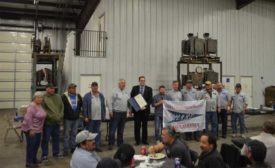Home » high hazard industries
Articles Tagged with ''high hazard industries''
BLS: 2016 work fatal work injuries highest since 2008
Workplace violence deaths up 23 percent
December 20, 2017
A blog post from the Union of Concerned Scientists
Will Congress turn its back on the safety of America’s workers?
March 20, 2017
ASSE: New recordkeeping rule is “a step backward”
Worst employers may report even fewer incidents
May 12, 2016
Workplace fatalities have increased
The leading cause of workplace death is also most-violated OSHA Standard
April 28, 2016
One year later
OSHA says injury reporting requirements help agency focus resources
March 18, 2016
Become a Leader in Safety Culture
Build your knowledge with ISHN, covering key safety, health and industrial hygiene news, products, and trends.
JOIN TODAYCopyright ©2025. All Rights Reserved BNP Media.
Design, CMS, Hosting & Web Development :: ePublishing









